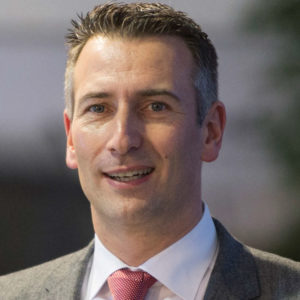In order to take full advantage of their digital transformation, banks also need to transform their operational models. Avaloq’s Managing Director Benelux – Frédéric Kemp – comments on why optimizing operational capabilities will further enhance the client journey and customer experience. – Paru dans l’ITnation Mag de Novembre 2016
 Banking is a complex and potentially risky business. Therefore, having first class information on the state of a bank’s clients or products is a crucial element
Banking is a complex and potentially risky business. Therefore, having first class information on the state of a bank’s clients or products is a crucial element
of sound business. As a result there have been various inventions to support banks in achieving this over the past centuries. For example, during the 15th century, the famous Medici Bank was an early adoptor of double-entry bookkeeping allowing it to get a clearer picture of its books. This not only reduced the Medici’s risk, but also allowed the bank to offer better-suited and more competitive products to its clients in comparison to competition. Centuries later, we operate in a world where most, but surprisingly not yet all, banks have adopted very efficient and fast core banking solutions. These core banking solutions, such as those produced by Avaloq, allow financial institutions to have an accurate and current view of ledgers, and service clients in near real-time on all types of transactions spanning credits to complex structured products.
Nonetheless, and whilst these digital core banking solutions allow to run the bank at excellent cost/income ratios, there is still potential for further cost and service enhancements especially within the client-to-RM relationship. At Avaloq, we are observing a trend by banks to start reviewing Front Office operations – driven, on one hand, by pressure to reduce personnel cost, while on the other hand, banking clients are expecting a fast and personal treatment taking into account their ambitions and needs.
The cost aspect is the first consideration to make. Reducing cost on the client interfacing layer typically entails increasing the number of bank clients per relationship manager. With dozens of bank clients, it is possible for a relationship manager to know their entire family history, their risk appetite, and their personal tastes. Therefore, an individual treatment can be provided to each client. In retail banking however, client/RM ratios typically increase to several hundred clients to one RM, potentially in the future thousands of clients on one Front Office employee. is naturally reduces the RM know- how about one particular client and maintaining a high service quality requires technical solutions that enable bank employees or the self-serving online client to find the “right” product and/or service.
Anticipating this requirement, Avaloq invests heavily in the area of Business Intelligence. In particular, we focus on providing better intelligence to the customer relationship manager, the product manager, and to the sales and marketing arm of the bank.
In line with the Medicis initiative mentioned above, it has become evident that to survive pressure from competition, banks need accurate information about client portfolios and not merely on accounting and transaction information. Avaloq develops solutions that allow the bank to mine large quantities of historical data, where billions of valuations and cash flows are performed in any kind of configuration or filtering. is, for example, includes studying regional differences in the behaviour of a bank’s client base by combining geolocation data with performance figures.
e future however, lies in accurate predictions and forecasting. But what are the needs of this client? Many banks still seek to identify the risk appetite of their clients by using standardised questionnaires, or they let relationship managers decide when to call or what product bundle to offer. At Avaloq, we believe this is not enough for healthy long-term relationships between banks and their clients. Clients living in 2017 are well informed and may desire specific products and services. However, it
still proves difficult for many clients to express their wishes to the bank – be it via a human relationship manager or a digital web banking platform. Also, on the bank’s side, it is often hard to read the information coming from the client and take appropriate actions. In other words, the client may know exactly what they want but does not necessarily know all the products the bank can offer. Meanwhile the bank on the other side knows exactly what it offers but often misunderstands the needs of the client – a classical communication problem on both sides. For this reason, Avaloq invests in products that are able to grind through the vast amounts of available data within the core banking system to find patterns and to understand what would be the best product for a particular client.
This does not mean a bank loses its independence and becomes similar to its competitor who uses similar Business Intelligence techniques and products. In contrast, banking still is a people’s- oriented business, and every bank has its own distinct client base which, with the right tools it will continue to serve better in the future.

Leave A Comment